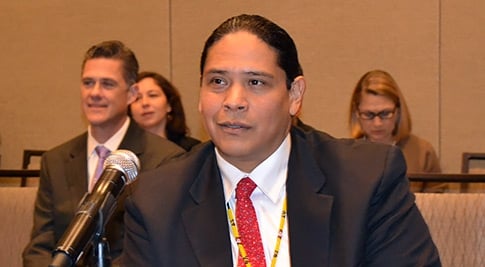Native American Casino Sector Generates Strongest Revenue Growth in a Decade
Posted on: July 26, 2016, 06:49h.
Last updated on: July 26, 2016, 06:50h.

The tribal gaming industry across America recorded its highest ever revenue figures last year, according to the National Indian Gaming Commission (NIGC). Its earnings of $29.9 billion represents a five percent increase on the previous year and its best growth margin in ten years.
In 2015 there were 474 gambling operations owned by 283 separate tribes across the country. Properties based on the Eastern Seaboard were the biggest revenue generators, with the 31 casinos in the region bringing in an average of $225.8 million each.
Casinos in California and Nevada were the next top performers; the 71 properties in the area earned 7.9 billion for the year, and average of $111.3 million each.
Disparity Exists
The NIGC neglects to name specific casinos, preferring instead to deal in broad averages, which highlights overall rosy figures, while perhaps glossing over the great disparity in the tribal casino market. A study published earlier this year by the economist Alan Meister, which looked solely at the state of the market in 2014, found that the top two states generated 39 percent of all revenues for the sector, while the top ten generated 85 percent.
However, Meister acknowledged that the sector in general was outpacing the commercial sector in terms of growth. The Indian Gaming industry bounced back much more quickly from the Great Recession than its commercial counterpart and has grown each year since 2009.
“The strong regulation that tribes, as well as federal regulators and other stakeholders, provides has played a key role in the stability and growth of the Indian gaming industry by providing consistency and predictability,” said NIGC chairman Jonodev O. Chaudhuri, during a news conference on the Cabazon Band of Mission Indians’ reservation in Indio.
Pioneering Cabazon Band
The setting had been chosen because the Cabazon Band was the tribe that first paved the way for all Native American Gaming. Its 1987 legal challenge against the State of California, which argued that a state could not forbid casino gaming on tribal sovereign lands if gambling were legal elsewhere in the state, was upheld by the US Supreme Court. This paved the way for the creation Indian Gaming Regulatory Act, and, through it, tribal casinos.
“Indian gaming is fundamentally different than commercial enterprises; it directly provides resources for Indian people including, social services, public works, education, housing, health care, emergency services, public safety and cultural presentation programs that no other economic driver has yet to provide,” said Chaudhuri.
No comments yet